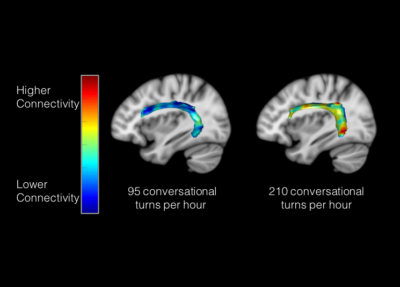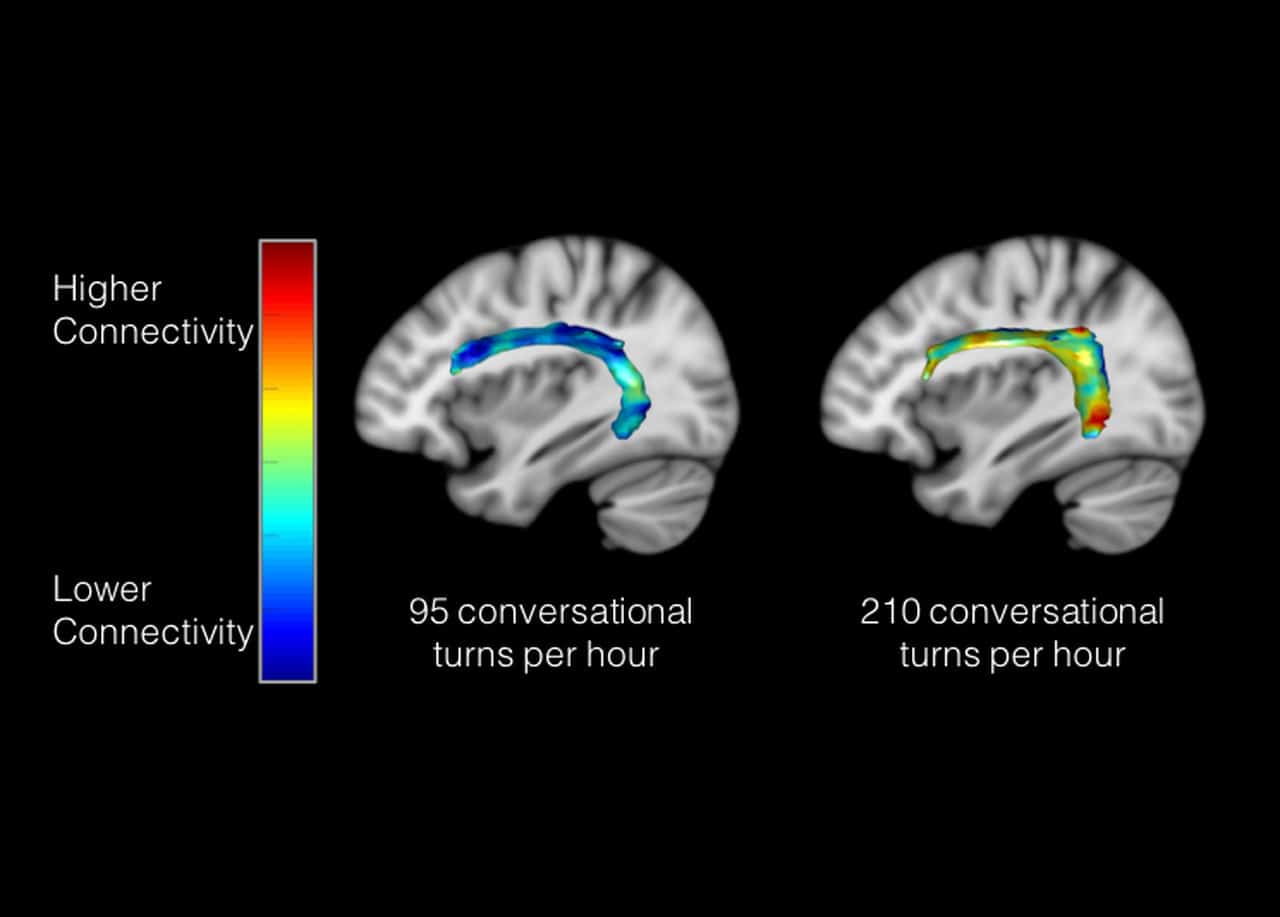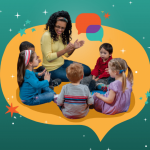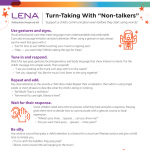
The amount of adult-child conversational turns that young children experience is related to the strength of white matter connections between two key language regions in the brain, as represented by the colored brain regions from two participants. Although both children are the same age and gender, and from the same socioeconomic background, they differ in the number of conversational turns experienced, which relates to the strength of white matter connectivity in these pathways.
The first research showing a relationship between conversational turns and brain structure was published today in JNeurosci. The paper, “Language Exposure Relates to Structural Neural Connectivity in Childhood,” investigates how conversational turns – back and forth interactions between children and their adult caregivers – relate to white matter connectivity between Broca’s area and Wernicke’s area, two regions of the brain critical for language.
This is the second of two recent publications investigating brain structure and function from a team of researchers at Harvard and MIT. The other paper, published earlier this year, focused specifically on the relationship between language experience and brain activity in young children.
“The difference is that in the first paper we were measuring the activation in specific parts of the brain during language processing, which determines which parts of the brain are being used to understand language–which brain regions ‘turn on’ when you hear language. And then in this paper, we’re measuring an actual structural component, the connectivity of the white matter between regions, which is how information travels from place to place in the brain, kind of like the information highways,” said Rachel Romeo, a post-doctoral researcher at MIT and Boston Children’s Hospital, and lead author on the paper.
The data for both publications came from the same sample of children ranging from 4 to 6 years of age. For this analysis, the team used diffusion MRI to measure brain structure, behavioral assessments to measure cognitive skills, and LENA technology to measure adult words, conversational turns, and other elements of each child’s language environment.
[callout]
“Whether it’s true or not, people tend to think brain structure is more genetically determined, and brain function is more environmentally influenced, though that doesn’t seem to be the case in a lot of more recent research,” said Romeo. “We wanted to investigate whether brain structure was also environmentally influenced.” [quote]
Ultimately, both studies found the same underlying correlation with conversational turns independent of adult words and socioeconomic status (SES).
“Increased activation in one area of the brain and increased connectivity between one region and another together suggest that when there’s more conversational turns the whole brain works together better,” said Romeo.
These research findings have potential implications for intervention programs that focus on enriching a child’s language environment in the earliest years.
“…the present results build on previous behavioral findings that the quality of language—specifically conversational interaction—is more strongly linked to children’s behavioral outcomes by revealing that this same quality is associated with white-matter development in children’s language brain circuitry. This suggests that early intervention programs should not only encourage parents to talk to their children, but to talk with their children to promote optimal brain development,” the paper concludes.
From here, Romeo plans to look further at the effectiveness of language enrichment interventions. She is in the planning stages of two studies: one to look at whether there are differences in the effectiveness of intervention across different age ranges, and another looking at contributions to SES and language in children with diagnosed speech or language delays.
See further media coverage of the study on: ABC News, Reuters, and The Times of London.



